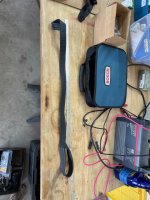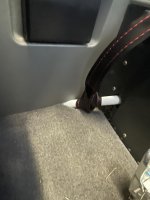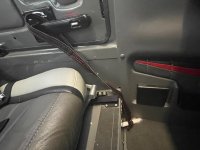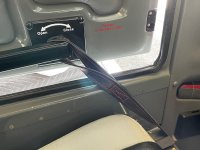rvanstory
Well Known Member
I live is South Texas where summers can be VERY hot. Thought long and hard about adding A/C, but just didn't want to be saddled with the weight penalty or add another system to maintain.
So, I'm trying something out and thought I'd share the idea in case others are faced with same decision point in their build (A/C vs. No A/C).
The plan is to use an "ice chest cooler" but plumb the air to come through the overhead vents via the Aerosport cabin tunnel. This way, I can have chilled air when needed on very hot days, but don't lose the useful loads for times with it's not needed, or when I need more weight capacity. Here's a link to my cooler choice. It uses a cooling coil, circulating water and fan for chilled air. Was highly rated by Aviation Consumer. https://www.b-kool.net/
Here's the steps for doing so:
1. Only plumb for one rear fresh air NACA vent. I put mine on the left side. My Mooney only has one NACA vent for overhead fresh air, and it's PLENTY.
2. Create a 2" passthrough hole in rear bulkhead to plumb chilled air from cooler (in baggage compartment) to Aerosport air vent controller.
3. Re-clock Aerosport air vent controller so that when one valve is open (fresh air) the other is closed (chilled air). When I want chilled air, controller will be turned for chilled air and the cooler fan will feed the overhead vents. When I want fresh air, turn valves other way. If I want no air, simply turn the controller for chilled air, but don't hook anything up. At this point, no air flow because no fan is on.
Here are pics of "work in progress" for others who may want more detail...
Here's pic showing fresh air NACA, rear bulk-head passthrough location and controller.

Here's pic of controller with valves "re-clocked" so when one is open, the other is closed.

Here's image of passthrough location in rear bulkhead. Wanted it to be in spot to easily connect chilled air hose, but out of way of other luggage. So, chose spot just inside baggage door towards top of opening. I plan to make a fiberglass "cap" to cover hole when not in use.

Won't know how well this will work till flying, which as you can see, is a long way off. But, it's seems like it can take some of the heat factor out and make taxi and run-up at least bearable.
So, I'm trying something out and thought I'd share the idea in case others are faced with same decision point in their build (A/C vs. No A/C).
The plan is to use an "ice chest cooler" but plumb the air to come through the overhead vents via the Aerosport cabin tunnel. This way, I can have chilled air when needed on very hot days, but don't lose the useful loads for times with it's not needed, or when I need more weight capacity. Here's a link to my cooler choice. It uses a cooling coil, circulating water and fan for chilled air. Was highly rated by Aviation Consumer. https://www.b-kool.net/
Here's the steps for doing so:
1. Only plumb for one rear fresh air NACA vent. I put mine on the left side. My Mooney only has one NACA vent for overhead fresh air, and it's PLENTY.
2. Create a 2" passthrough hole in rear bulkhead to plumb chilled air from cooler (in baggage compartment) to Aerosport air vent controller.
3. Re-clock Aerosport air vent controller so that when one valve is open (fresh air) the other is closed (chilled air). When I want chilled air, controller will be turned for chilled air and the cooler fan will feed the overhead vents. When I want fresh air, turn valves other way. If I want no air, simply turn the controller for chilled air, but don't hook anything up. At this point, no air flow because no fan is on.
Here are pics of "work in progress" for others who may want more detail...
Here's pic showing fresh air NACA, rear bulk-head passthrough location and controller.
Here's pic of controller with valves "re-clocked" so when one is open, the other is closed.
Here's image of passthrough location in rear bulkhead. Wanted it to be in spot to easily connect chilled air hose, but out of way of other luggage. So, chose spot just inside baggage door towards top of opening. I plan to make a fiberglass "cap" to cover hole when not in use.
Won't know how well this will work till flying, which as you can see, is a long way off. But, it's seems like it can take some of the heat factor out and make taxi and run-up at least bearable.









